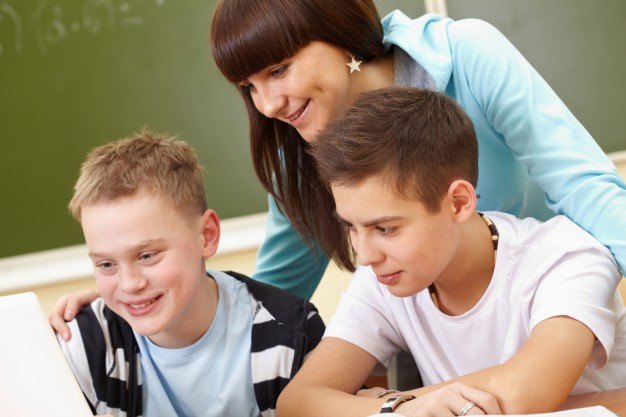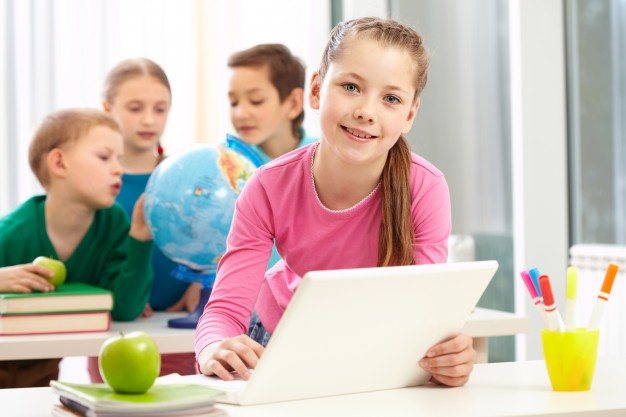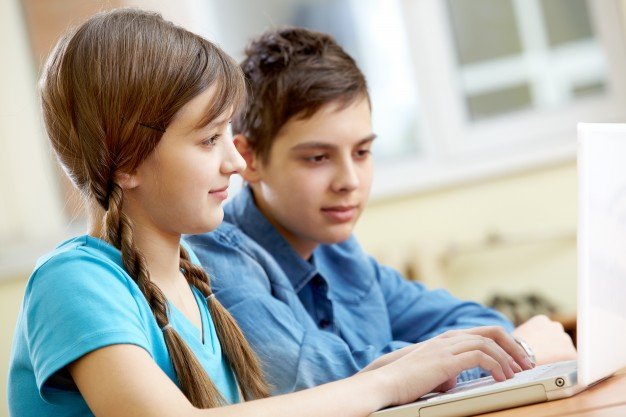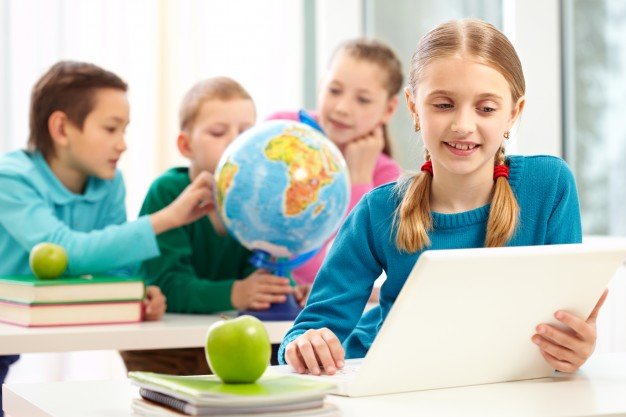For example, iPads and tablets can replace bulky textbooks. Smartphones can allow for quick research and access to educational apps. Social media can provide an opportunity for increased parent-teacher communication and student activities. Monitoring services can be used to track the usage of technology. Technology can also be an important way for teachers to collect student data that can have a positive impact on learning outcomes.
The good news is that the research also backs this up. In a study completed by KIPP Academy in Houston, TX,the percentage of students who achieved an overall rating of either proficient or advanced was 49% percent higher in classrooms that are using iPads, compared to traditional classrooms with no iPads. In another study completed by Houghton Mifflin Harcourt in California, students using iPads saw their math test scores increase 20% in one year compared to students using traditional textbooks. As you can see, the impact that technology can have on student learning outcomes is quite significant. Technology has the unique opportunity to change the way that students learn and teachers teach. The professional development of teachers has started to evolve to include ways to incorporate emerging technology and tools into classroom activities. When technology is embraced in the classroom, students are better positioned to be successful in their lives outside of school. Here are a few more reasons that technology in the classroom is revolutionizing education.
1. Technology Enhances the Fun in Learning
Studies show that students prefer using technology because it makes things more interesting and fun to learn. The most commonly used forms of technology in schools are laptops and tablets of all kinds, including iPads. Using this technology can make a student’s least favorite subjects become more interesting to them by incorporating games, virtual lessons, videos, and other interactive teaching methods into their daily lessons. With a standard textbook, it is much more difficult to turn an otherwise boring subject into something that will capture students’ attention. While implementing these tools into a school or classroom can be quite pricey, there are programs in place with schools and manufacturers (for example, Apple) that allow schools with any budget to be able to afford the technology. Another major factor to consider is replacement or repair costs if the tablets get lost or damaged. That’s why finding a safe and efficient way to store tablets and laptops is critical to keeping costs down and reducing downtime for both students and teachers.
2. Technology Better Prepares Students for the Future
Every day we learn about new technology that will revolutionize the ways we interact with the world around us. It is important that we prepare students to successfully engage in this new technological world. These These 21st-century skills are essential for success. For example, most jobs now include interactions with some level of technology. The concept of education is not just about memorizing facts or expanding vocabularies, it is also about learning skills that will prepare students to interact with the world and be successful in the workforce. Classrooms that focus on technology ensure that students are prepared to have a bright future in the rapidly growing digital economy.
3. Technology Increases Retention Rates
Students retain information better when using technology as a learning tool. For example, in one study, 18 second grade students were asked to complete a PowerPoint presentation about an animal of their choice. In the study 16 out of the 18 students remembered more facts about the animal in their project after the presentation than students who completed the project without using PowerPoint. This study demonstrates how technology helps students to better retain what they learn.
4. Technology Allows for Self-Paced Learning
Students learn at different rates. However, it can be challenging for teachers to individualize lesson plans. It is much easier with technology. Almost all apps and programs allow for individualized instruction. This means students can focus on their specific needs and do it at their own pace. This also helps teachers focus their time on students who are struggling or may require more attention. This improves the classroom environment for everyone.
5. Students Connect with Technology
Technology has become a way of life for students. Even when they are not in school almost everything they do is connected to technology in some way. This has predisposed students to be able to connect with technology in the classroom. It is much easier to connect with individualized lesson plans through technology than reading a textbook or listening to a long lecture. Students are also able to connect with the tools they need to be successful in the 21st century.
Conclusion
Technology changes extremely quickly. It is important that educators keep up with these changes to ensure students are prepared for our ever-changing world. Integrating technology into the classroom can enhance student learning. However, it is also important to remember that technology is not a complete replacement for traditional methods. Technology should be used to enrich the overall educational experience and improve student learning outcomes. This will allow the technology used to have a profound impact on student learning. Featured photo credit: pressfoto via freepik.com






